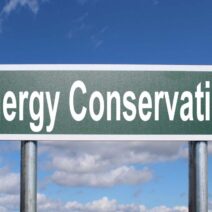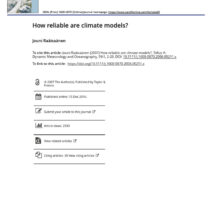The urgency of climate change and the pressing necessity for energy conservation have spurred legislative bodies across the globe to take decisive action. Among the most significant measures enacted in this arena is the Energy Conservation Act. Enacted in various forms by different nations, this legislation aims to mitigate energy waste, stimulate efficiency, and ultimately protect our planet from the detrimental impacts of excessive energy consumption.
At its core, the Energy Conservation Act serves as a framework within which governments can cultivate a culture of energy accountability. This act addresses a common observation: that unbridled energy consumption leads not only to environmental degradation but also escalates economic inefficacies. The simple reality is that many individuals and businesses take energy for granted, leading to habitual overuse. However, this oversight has deeper implications than can be readily apparent. The act not only aims to curb this wastage but instills a sense of responsibility towards natural resource management.
The genesis of the Energy Conservation Act lies in the recognition of energy as a finite resource. This is not merely a theoretical construct; it possesses tangible consequences for ecosystems and human livelihoods. From the degradation of our air and water quality to the indirect effects on wildlife habitats, the implications of energy over-exploitation are extensive. Legislators have acknowledged these multifaceted challenges and have constructed legal frameworks that when properly implemented, can usher in a paradigm shift in how energy is viewed and utilized.
One of the paramount tenets of the Energy Conservation Act is advocating for energy efficiency standards. These standards are meticulously designed to govern the use of energy across various sectors, including residential, commercial, and industrial domains. For instance, appliances such as refrigerators, air conditioners, and lighting systems are subjected to rigorous efficiency metrics that manufacturers must meet. By mandating these standards, the act not only promotes lesser energy usage but also accelerates technological innovation. Producers are encouraged to develop cutting-edge, energy-efficient technologies that not only serve the market but also lead to substantial reductions in carbon emissions.
In conjunction with efficiency mandates, the act also emphasizes the importance of energy audits. These evaluations identify areas where energy conservation can be easily integrated into existing structures and operations. By utilizing energy audits, businesses can pinpoint inefficiencies and implement strategic measures to minimize energy consumption. This operational overhaul not only reduces costs but also enhances corporate responsibility, aligning profit motives with environmental stewardship.
A significant aspect of the Energy Conservation Act is its role in fostering renewable energy initiatives. Many versions of the act extend provisions that support the transition from fossil fuels to renewable energy sources such as solar, wind, and geothermal. This shift not only diversifies energy portfolios but also contributes to energy security. As nations grow increasingly dependent on finite resources, the need for reliable and sustainable energy sources becomes paramount. Thus, the act plays a critical role in facilitating research, funding, and subsidies for emergent renewable energy technologies.
Besides enhancing efficiency and promoting renewables, the Energy Conservation Act also cultivates public awareness and education. It compels government agencies to engage in outreach programs that communicate the importance of energy conservation to the general populace. By fostering awareness, the act seeks to change consumer behavior fundamentally. Individuals become active participants in the energy conversation, adopting practices that contribute to the collective aim of sustainability.
Compliance mechanisms are also pertinent in the execution of the Energy Conservation Act. Governments utilize a variety of tools, including financial incentives, rebates, and tax credits to encourage adherence to energy conservation measures. These disincentives for non-compliance work effectively in persuading stakeholders to align with energy-saving goals. In essence, the act functions as both a carrot and stick approach, driving energy efficiency from multiple angles.
Many countries have also instituted Energy Conservation Building Codes (ECBC). These codes regulate the construction and renovation of buildings to ensure they meet specific energy efficiency standards. Such codes are vital for reducing energy consumption in the built environment, which is one of the largest consumers of energy. By applying stringent guidelines, the act helps forge buildings that not only consume less energy but are also more resilient against climate-related impacts.
Another noteworthy outcome of the Energy Conservation Act is its potential to impact energy prices. As energy efficiency increases and reliance on renewable sources expands, the overall demand for fossil fuels may decrease. This shift can lead to stabilization and possibly reduction in energy prices, making energy more accessible to all. Affordable energy paves the way for socio-economic development, particularly in underprivileged communities that often bear the brunt of energy crises.
However, the Energy Conservation Act is not without its challenges. Implementation can often be met with resistance from industries accustomed to traditional energy models. Additionally, the complexity of coordinating efforts across different sectors leads to varying degrees of success. Tackling these obstacles requires continuous dialogue among stakeholders, including government entities, private sector partners, and civil society organizations, to cultivate synergy and drive cohesive action.
In conclusion, the Energy Conservation Act is a critical legislative measure that addresses urgent concerns regarding our planet’s health and the sustainability of our energy systems. By mandating efficiency standards, supporting renewable energy, and fostering public awareness, this act not only aims to conserve energy but also engenders a collective consciousness around the environment. As the gravitas of climate change continues to rise, the veracity of this legislation remains indispensable in our pursuit of environmental sustainability and a more resilient future.







